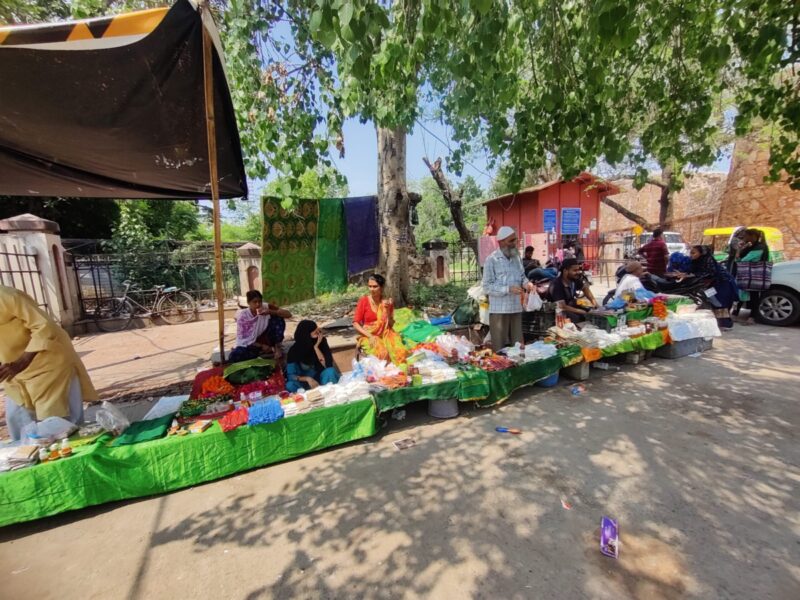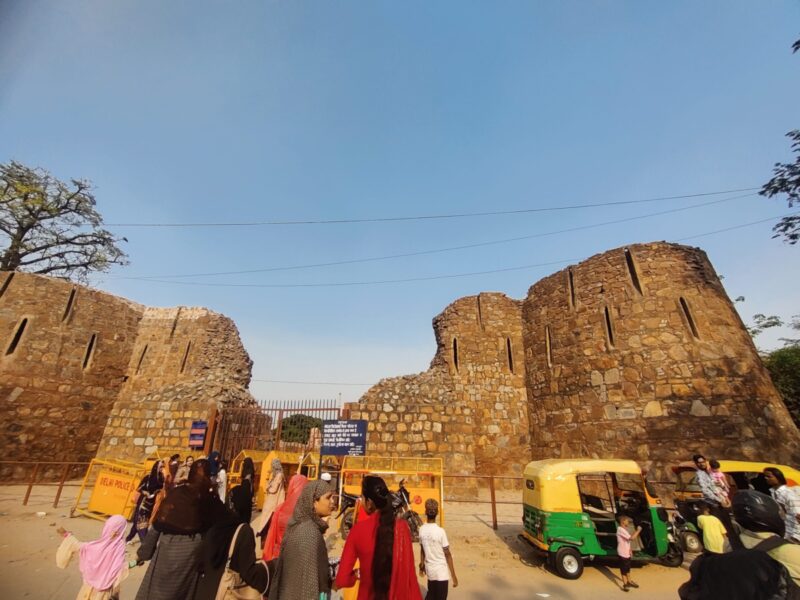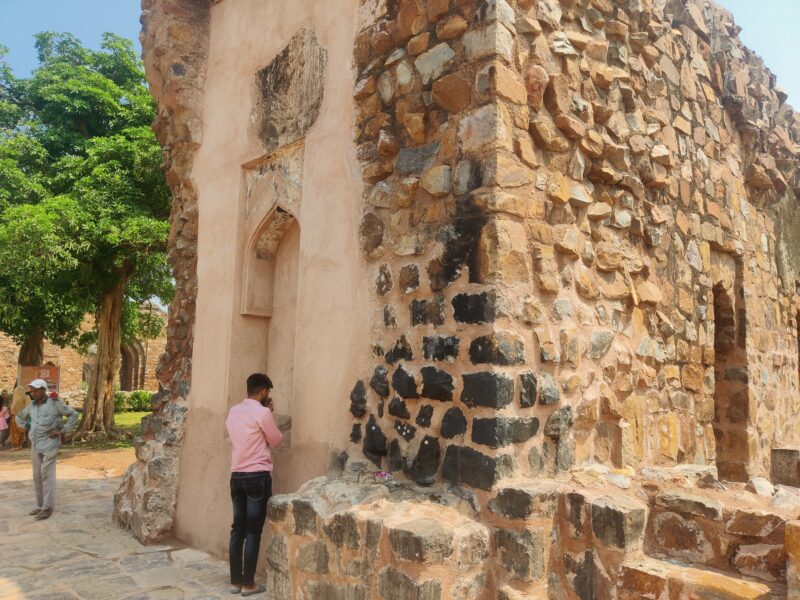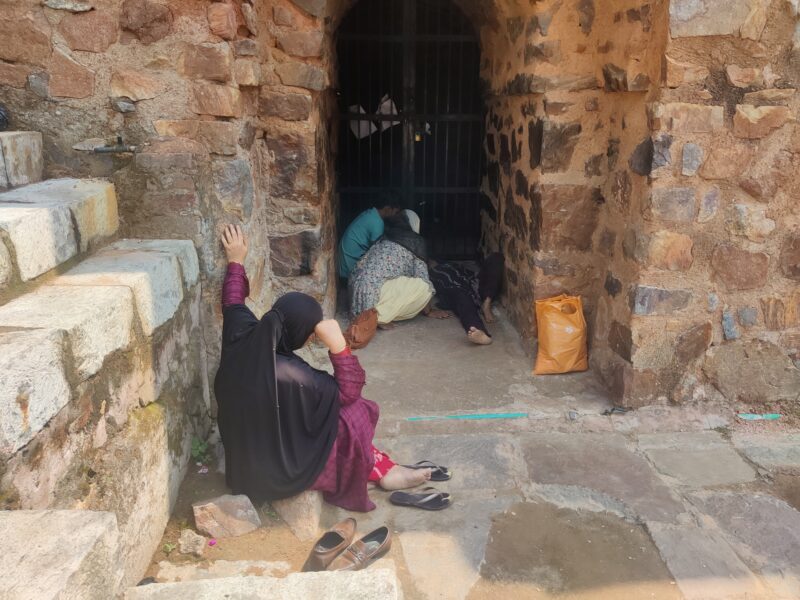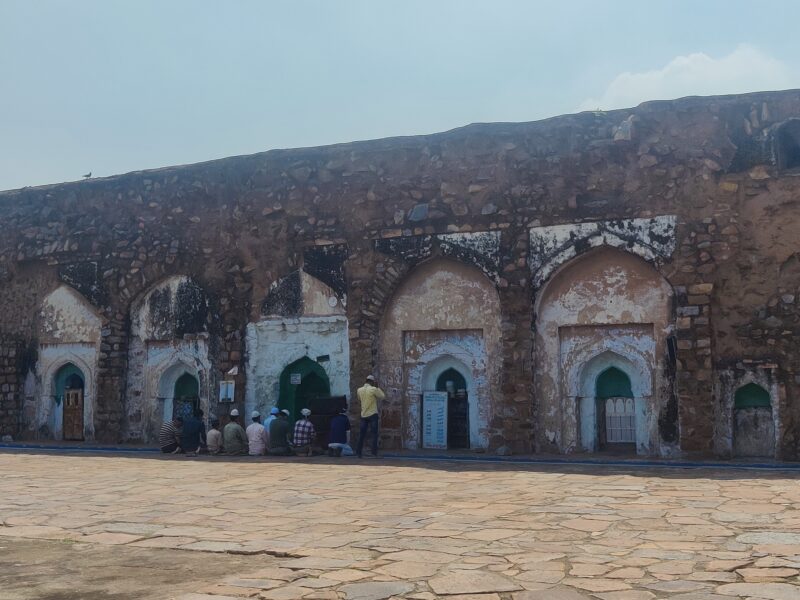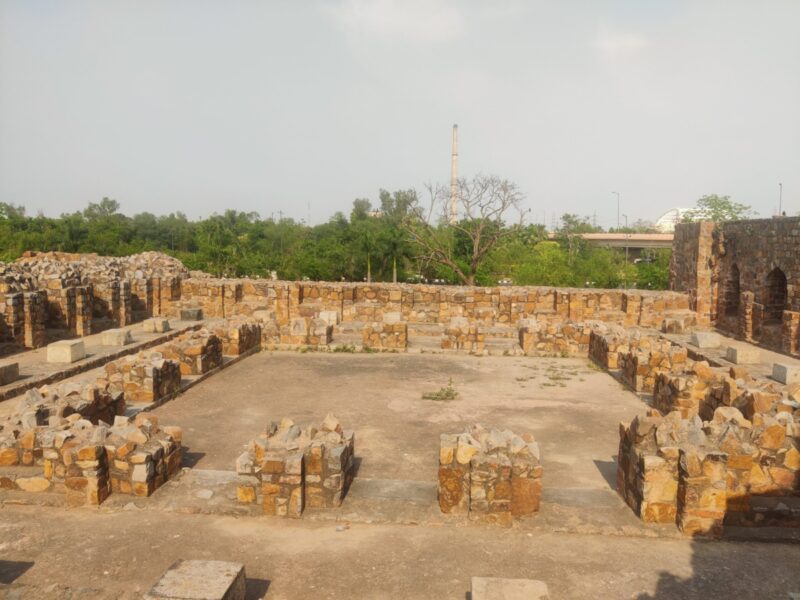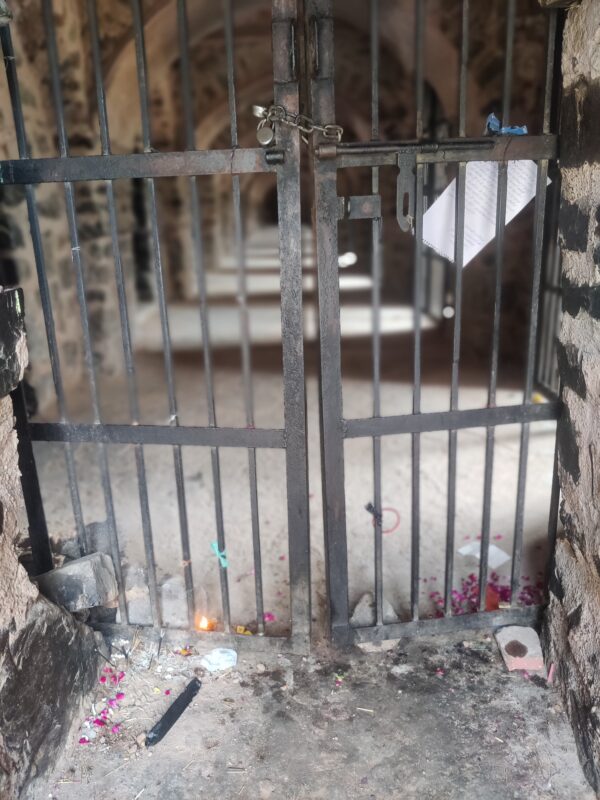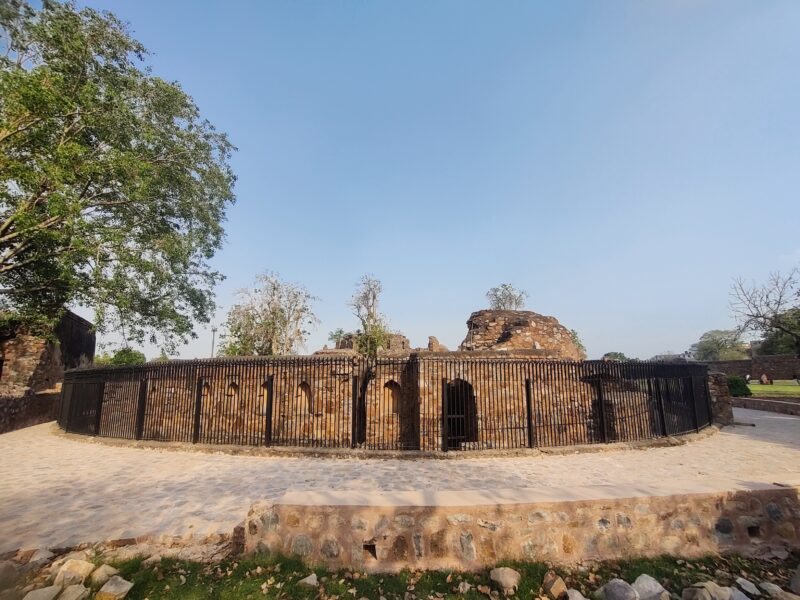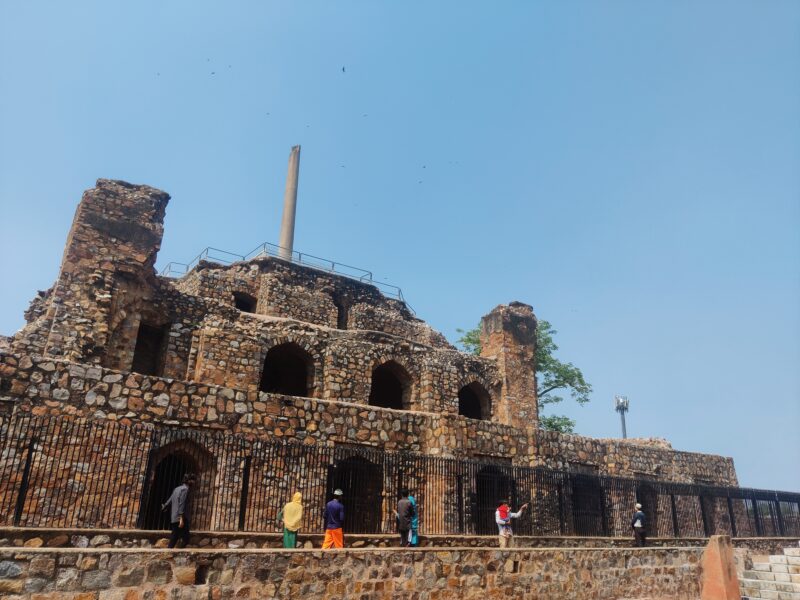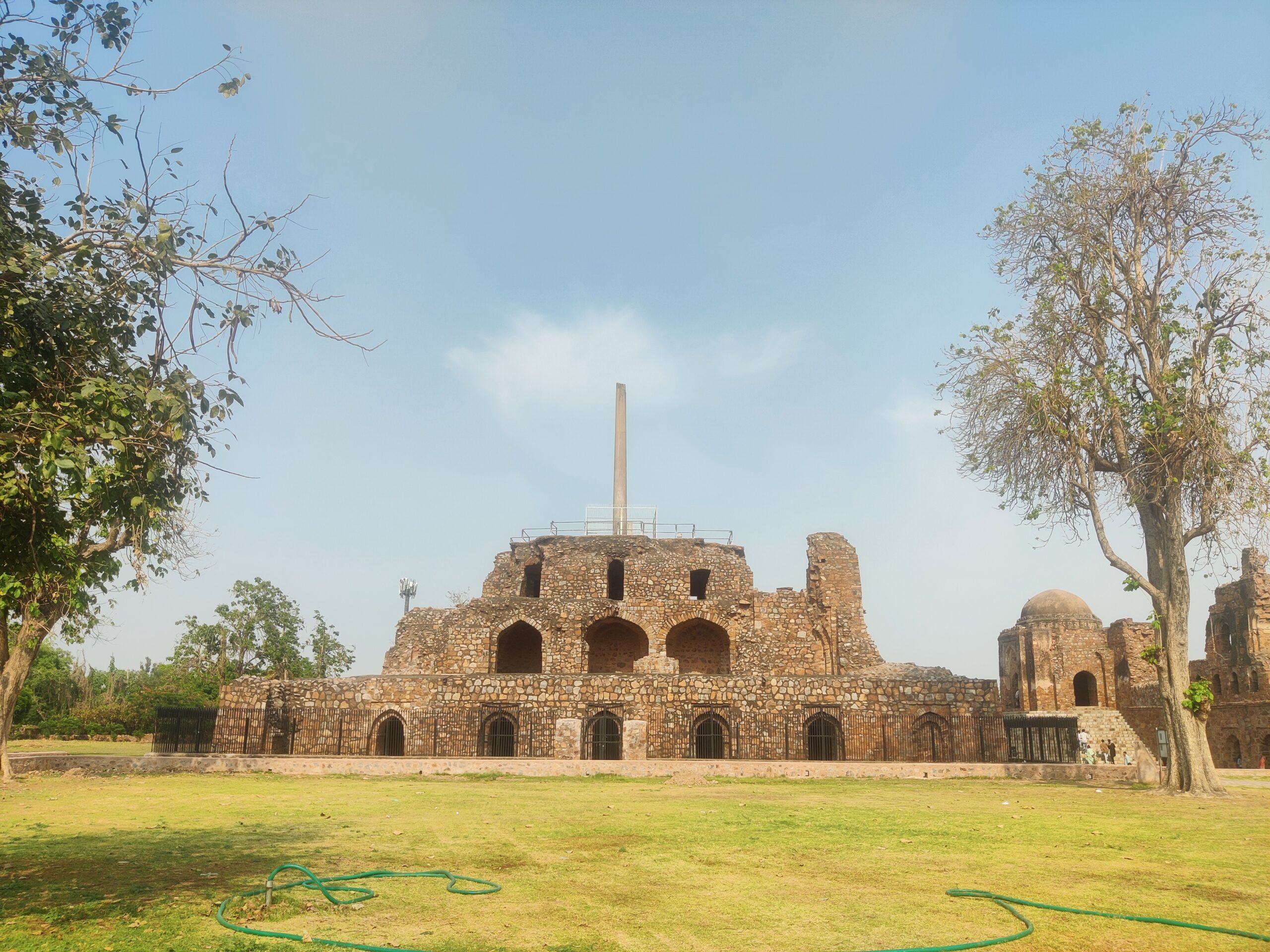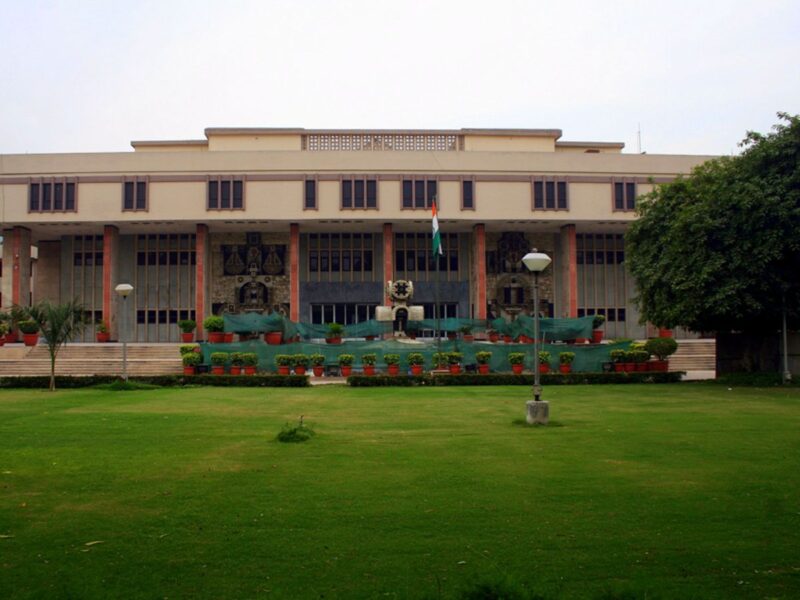Feroz Shah Kotla Fort, built by Sultan Feroz Shah Tughlaq in the 14th century, is an architectural remnant steeped in history amid whispers about the supernatural. It offers a captivating journey into the heart of Delhi’s cultural heritage.
From the revered Jami Masjid to the enigmatic Ashokan Pillar, each nook and cranny of the remains resonates with the fervent prayers of devotees, seeking solace, blessings and miracles.
On Thursday afternoon, a woman in her 30s, accompanied by a man and a woman, arrived at the Feroz Shah Kotla Fort to connect with the spiritual realm. Carrying a letter and candles, she sought solace from the djinns believed to be residing within the fort. Reverently, she affixed photocopies of her letter at different locations while fervently praying to the djinns.
Overwhelmed by emotions, the woman eventually lied down, weeping. She then prostrated herself on the ground.
After an hour, she lost consciousness, causing her worried family members to gather around her and offer prayers for her well-being. Such scenes are a regular occurrence at Feroz Shah Kotla Fort on Thursdays, when numerous devotees gather at the ruins to pay homage to the djinns.
They engage in prayers, light candles and diyas, and express their heartfelt desires through written letters.
It is important to clarify that although these visits bear some resemblance to those made to dargahs, the venerated beings at Feroz Shah Kotla Fort are the djinns, not sufi saints or dervishes.
The architecture of Feroz Shah Kotla Fort is awe-inspiring, and reflect the diverse cultural influences of the time. Every corner of the fort, from intricate carvings to majestic pillars and imposing gateways, provides a glimpse into the architecture of that era.
Within the fort, the Jami Masjid stands as a symbol of religious harmony, with its elegant minarets and ornate domes attracting worshippers from various faiths.
Adjacent to the Jami Masjid, a mosque located within the fort, there is a pyramid-like structure known as Ashokan Pillar or Minar-e-Zareen. This 13.1-metre polished sandstone pillar, believed to be from Topra, Haryana, bears inscriptions dating back to the 4th century BC.
According to reports, the Minar-e-Zareen is the dwelling place of Laat (pillar) Waale Baba, the chief of the Kotla djinns. Devotees tie letters addressed to him on the railings guarding the pillar, and extend their hands through the railings, firmly believing that their wishes, made while touching the pillar, will be granted.
Another notable feature of the fort is the Baoli, a step-well that served as a water reservoir during the Tughlaq dynasty.
Adorned with intricate carvings and filled with the gentle echoes of water, this Baoli creates a serene ambiance, offering a glimpse into the daily life of the fort’s former inhabitants.
Beyond its architectural and historical significance, Feroz Shah Kotla Fort is a melting pot of diverse religious beliefs. Through the centuries, it has served as a sanctuary for people from different faiths, seeking solace, blessings, and divine intervention.
